Burkina Faso
Located in the Sahel in West Africa, Burkina Faso, meaning “land of honest men” is a center of remarkable cultural heritage. The country is also a refuge for citizens fleeing the violence and instability of Jihadist groups in Mali since 2012. Burkina Faso grapples with its own challenges, including the presence of Jihadist groups and a recent series of military coups.
Explore Projects in Burkina Faso

Goudoubo Refugee Camp
-

March – June 2014
-

8,100 people reached
-

Promoted tolerance and unity
-

34 youth and 28 community leaders participants
-

60 youth sessions
Goudoubo Refugee Camp
Peopled by Malian refugees, the Goudoubo Refugee Camp was home to different ethnic groups with deeply entrenched animosity. Colors of Connection engaged youth from different ethnic groups that lay on opposing sides of the conflict through art, dialogue and collaboration. The project created the opportunity for youth from these groups to overcome reductive stereotypes and engage with each other, helping to dispel harmful ideas perpetuating conflict. Together, participants from these groups produced 2 murals promoting peace and education.
Support from the Belacqua Charitable Trust, the generosity of individual donors and our partner Save the Children made this project possible.
-
In 2014, approximately 10,500 Malian refugees fled to the Guodoubo Refugee Camp, seeking refuge from Touareg rebels, Islamic extremist militant groups and political insecurity in Northern Mali.
Deeply rooted ethnic tensions precipitated this crisis and the camp; in this moment of upheaval CC created the space for refugees to get to know each other and overcome the simplified ethnic narratives fueling the conflict in Mali.
The Goudoubo Refugee Camp project engaged out-of-school youth residing in the camp who had no access to school or recreational activities. Boys and girls aged 12-18 came from Peul, Arab, Touareg and Bella ethnic groups representing the diverse camp composition. Some had dropped out of school, some were illiterate and had only attended Koranic school, and others were waiting for an opportunity to continue their high school education, which was not available in the camp.
These youth came together to produce two murals in public spaces in Goudoubo. Throughout the project, youth participated in art activities designed to mitigate trauma, including drawing stories about their refugee journey, body mapping, creating self-portraits, learning non-violent communication techniques and expressing emotions through painting, clay, and movement.
The project provided a unique safe space for youth across ethnic, gender, and age divides to be creative, build relationships and express and process their experiences of recent displacement and exposure to traumatic events.
Murals created
In response to the violence and deep conflict shaping the lives of residents, community leaders and participants chose education and peaceful cohabitation as the ideas they wanted to promote and celebrate in their community, creating the Peaceful Cohabitation and Development Through Education murals, each a bold vision of a better future.
Spotlight: Peaceful Cohabitation
34 youth came together from diverse ethnic groups choosing to create a hopeful vision of peaceful coexistence.
The upper section of the mural depicts village life, each ethnic group represented by their own building style and traditional work. On the left are Touareg and Arab houses, in the center are Peuhl houses, and on the right, Songrhaï houses.
The Touareg milk a camel, the Peuhl herd cattle, the Songrhaï cultivate the land, and the Arab sell goods.
To the right is a poem about peaceful cohabitation, written by Sidi Hamd Ag Mohamed Ahmed, a Touareg poet in the camp. It is translated here in English.
An intellectual has to act with clarity and a great sense of responsibility to lead his people and benefit from the admiration of all. His expressions must be relevant, worthy, and admired by others.
Ignorance is tantamount to a piece of clay between the rocks, which erodes in the winter rains. Every time a person walks on the eroding path, the path becomes more and more dangerous until it arrives at its ultimate decline.
“Joining the class was better for me, for loneliness. I didn’t have friends before the project. Now everyone in the project is my friend.”
Feedy, age 15, Goudobo project participant
“I feel joy when I look at the murals because I see a message of peace, and now I am hopeful of returning to my country in peace because if the youth, who are the strength of the society, understand this message of peaceful cohabitation, all will be well for the future.”
Ati Wallet Ibrahim, Resident of Goudoubo Refugee Camp
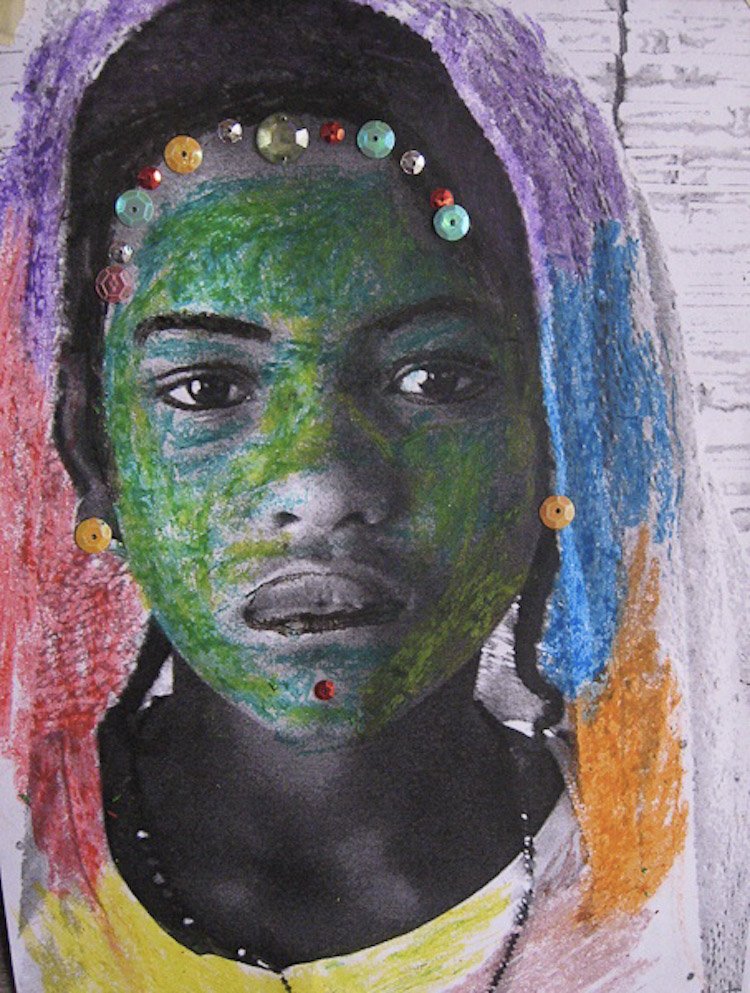
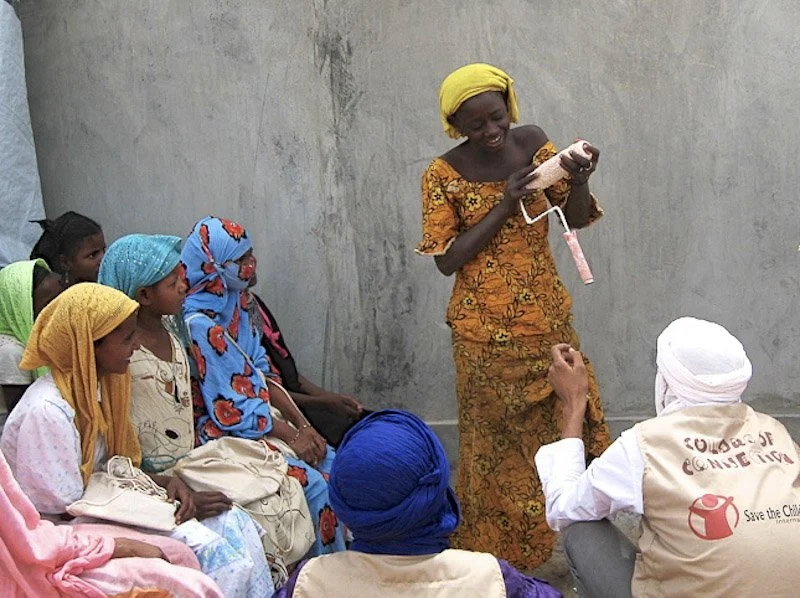





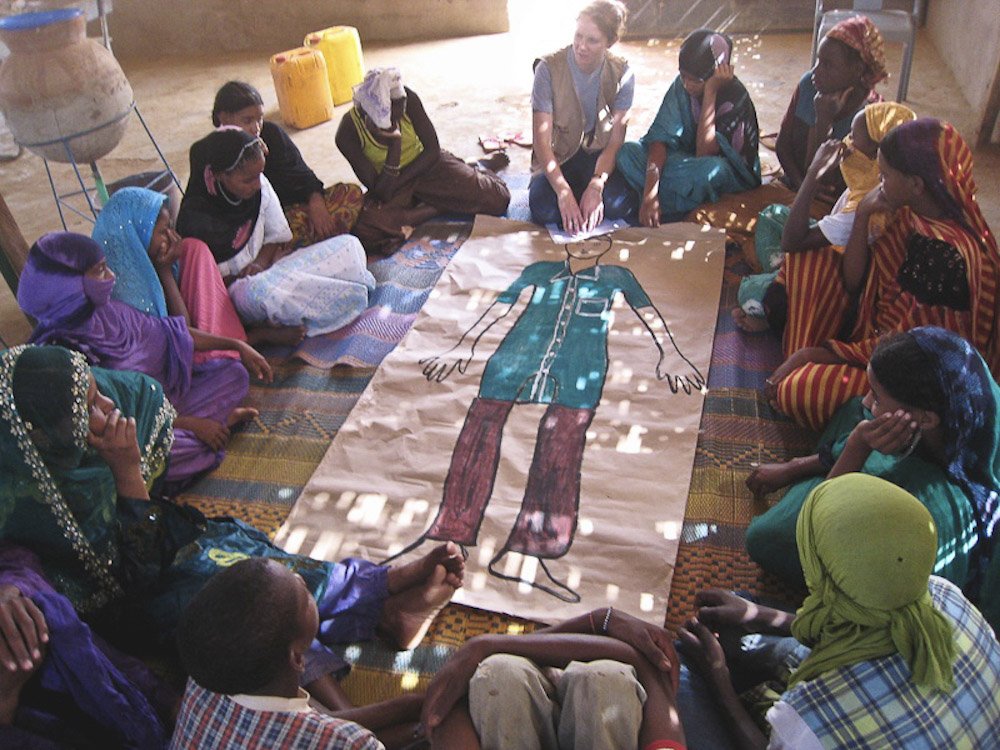


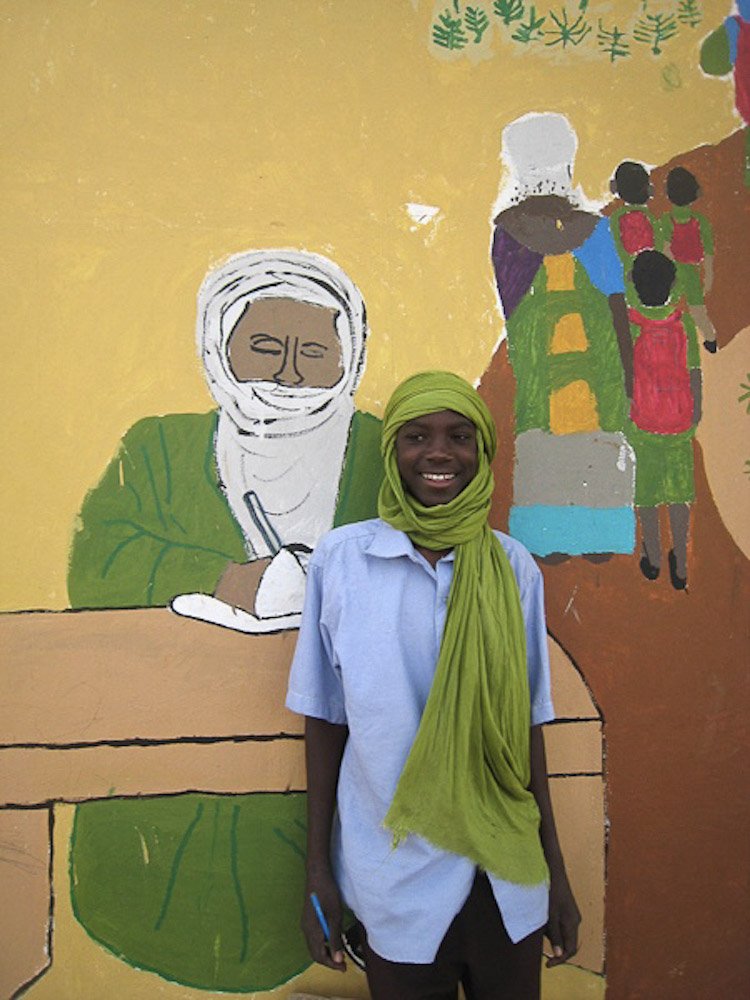


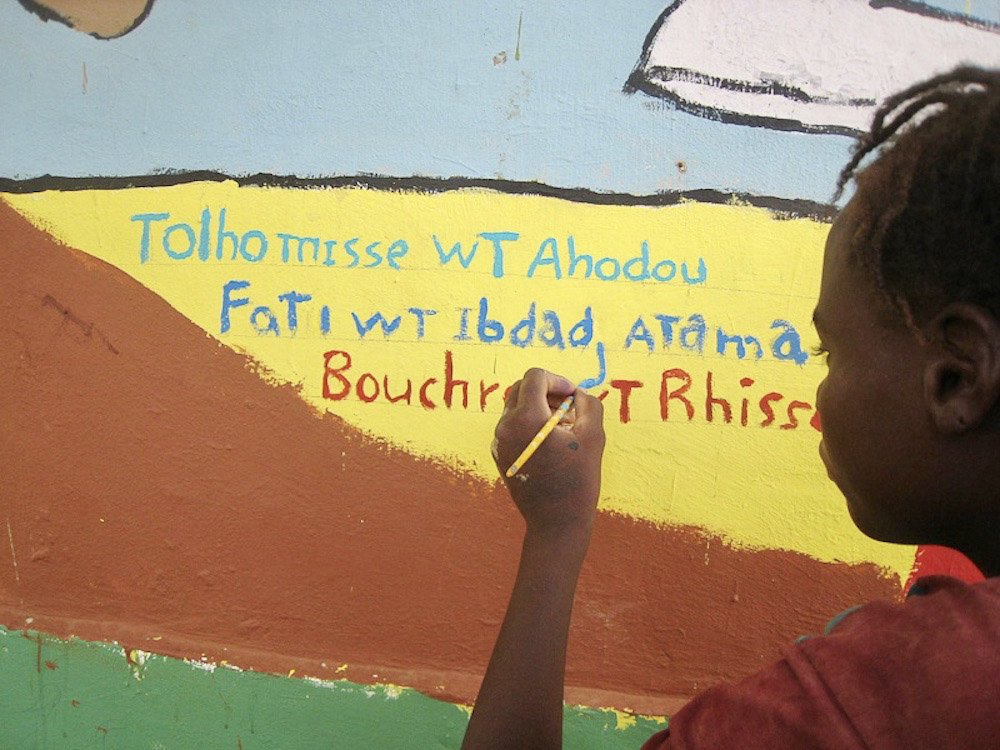



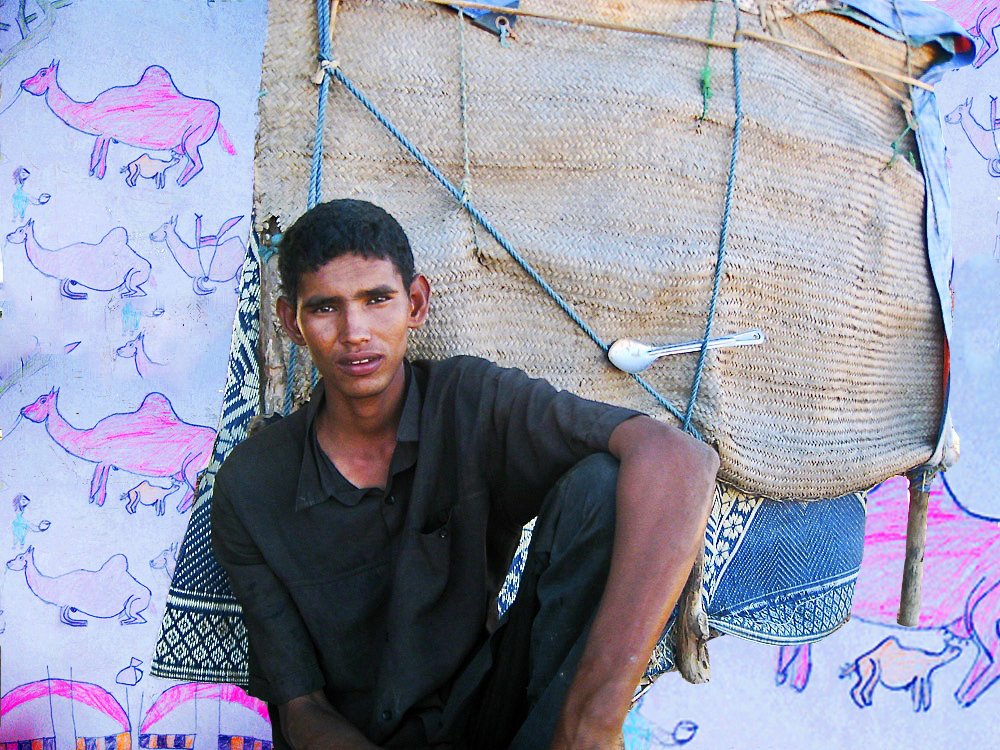
Mentao Refugee Camp
-

November 2013 – February 2014
-

11,250 people reached
-

Affirmed the importance of education and human rights
-

31 youth and 30 community leaders participants
-

60 youth sessions
Mentao Refugee Camp
The Mentao Refugee Camp Project dedicated support to Malian youth impacted by the armed conflict that had overtaken their country. CC offered out-of-school youth the opportunity to engage in art-based activities designed to help them process trauma and give them a place to connect with each other. The effort included facilitated discussions about human rights violations they perceived as central to their own experiences and the conflict of their homeland.
The Riverside Sharing Fund, the generosity of individual donors and our partner International Education and Development Aid Relief (IEDA-Relief) made this project possible.
-
The Mentao Refugee Camp Project is in Northern Burkina Faso, across the border from Mali. In 2013, the camp was home to 11,250 refugees. This project engaged an ethnically diverse group of young people residing in the camp who were out of school and facing social isolation and upheaval, similar to youth in the Goudoubo Refugee Camp.
CC used arts activities to support young people in processing the traumas of conflict and displacement while creating a safe place to develop relationships with other young people across ethnic, age, and gender divides. The public art component enabled youth to have a visible leadership role in driving change in their community.
The program included a series of discussions dedicated to youth participants and their perspectives on the human rights violations they saw at the heart of the conflict in Mali. CC taught participants about the protections represented in the United Nations Declaration of Human Rights. Through drawing, youth participants explored how these articles could be enacted in their community.
Murals created
The youth of the Mentao Refugee camp created two murals expressing the importance of education and human rights in Mali. The murals affirm how respect for human rights, and education, including Western, Koranic and Alphabetization/Literacy, will create a more equitable and peaceful society.
Spotlight: Peace Through Human Rights
The Peace Through Human Rights Mural honors the core human rights protected in the United Nations Declaration of Human Rights. Each image represents one of these rights in French, the official language in Burkina Faso and Mali.
Upper left: a football match with “Right to political liberty” written beneath, a protection from Article 21. Playing football was outlawed by Islamic militant groups controlling Northern Mali.
Upper right: a herder on the move with his small herd of cows. Below is text from Article 13, reading “Right to free movement.”
Bottom right: A journalist stands with a tripod, saying out loud “Right to free speech,” protected in Article 19.
Center: a group of protestors marching, those in the front carrying a banner emblazoned with the statement “Everyone has the right to life and security,” from Article 3.
Bottom left: a handicapped person being cared for. Below, text from Article 25, reading “Right to social security.”
Top: the Arabic saying “Peace is good and sweet” is written in French, Tifinigh (ancient Tamacheck), Tamacheck, and Arabic.
“This project gives us hope because we say that everything that the children have drawn is like a dream that can become a reality tomorrow.”
Fati Wallet Mohamed Elmoctar, Committee of Women, Mentao Refugee Camp
“I trained in art, drawing and painting with the teacher and director Christina Mallie, and I am very pleased with the project.”
Aminatou, age 17, Mentao Project Participant

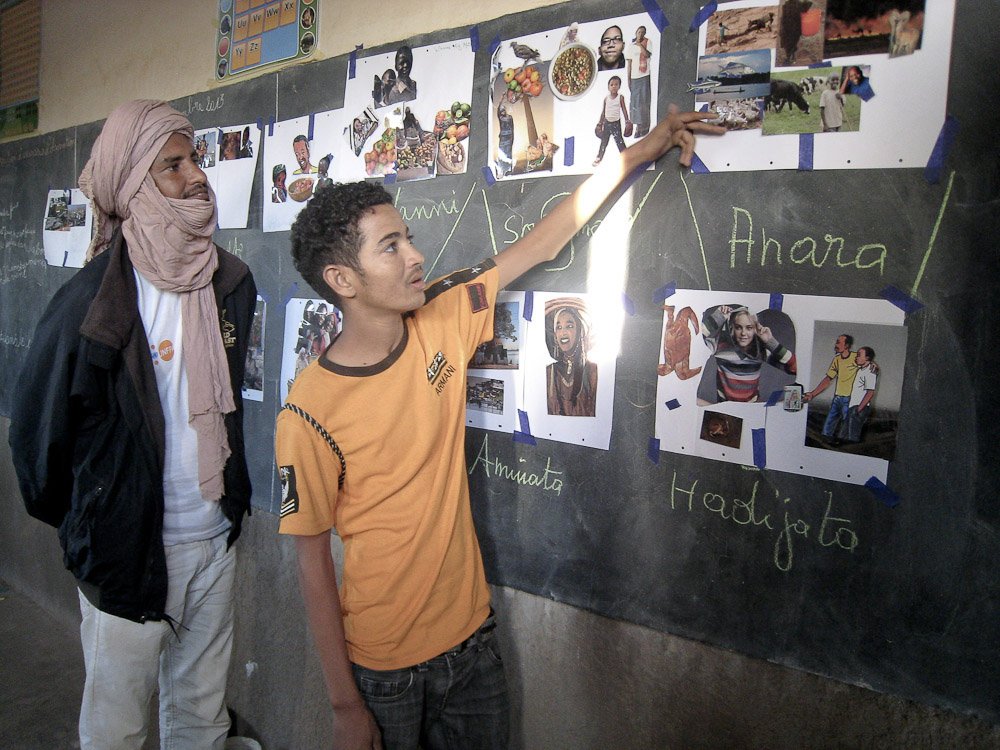


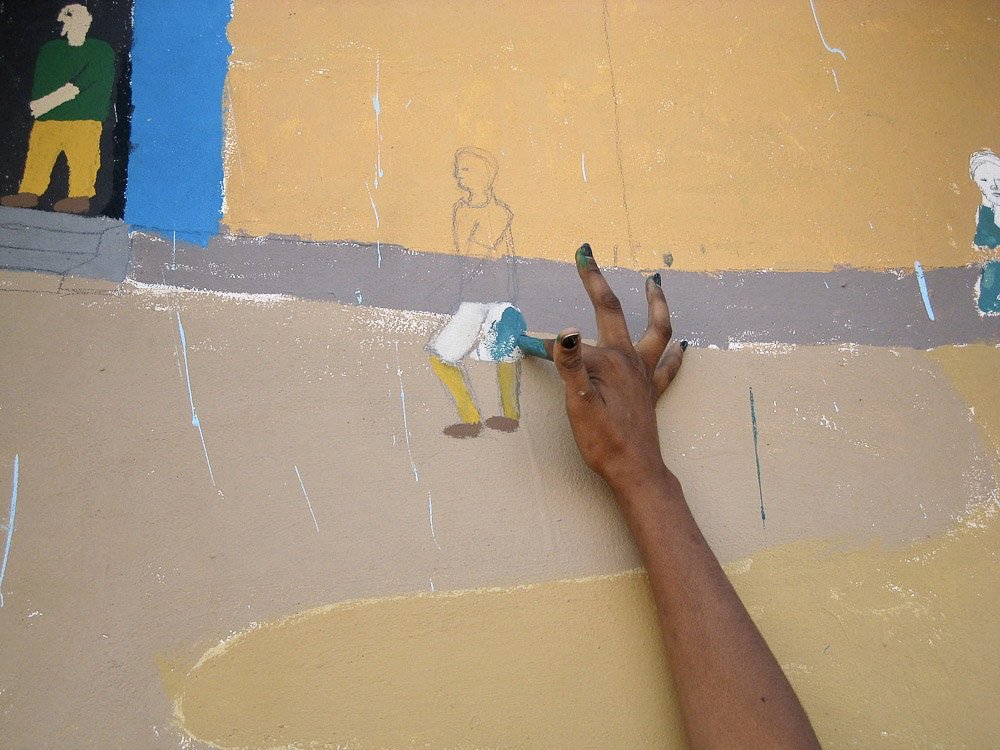

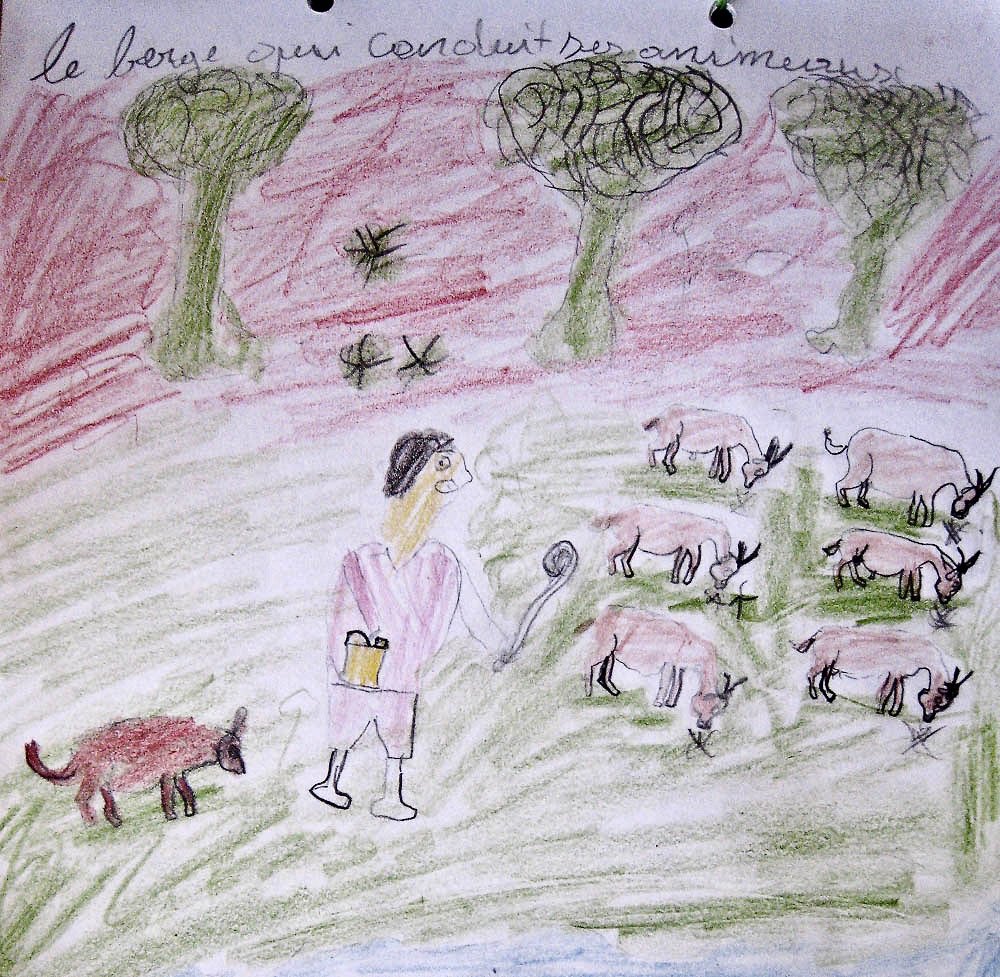


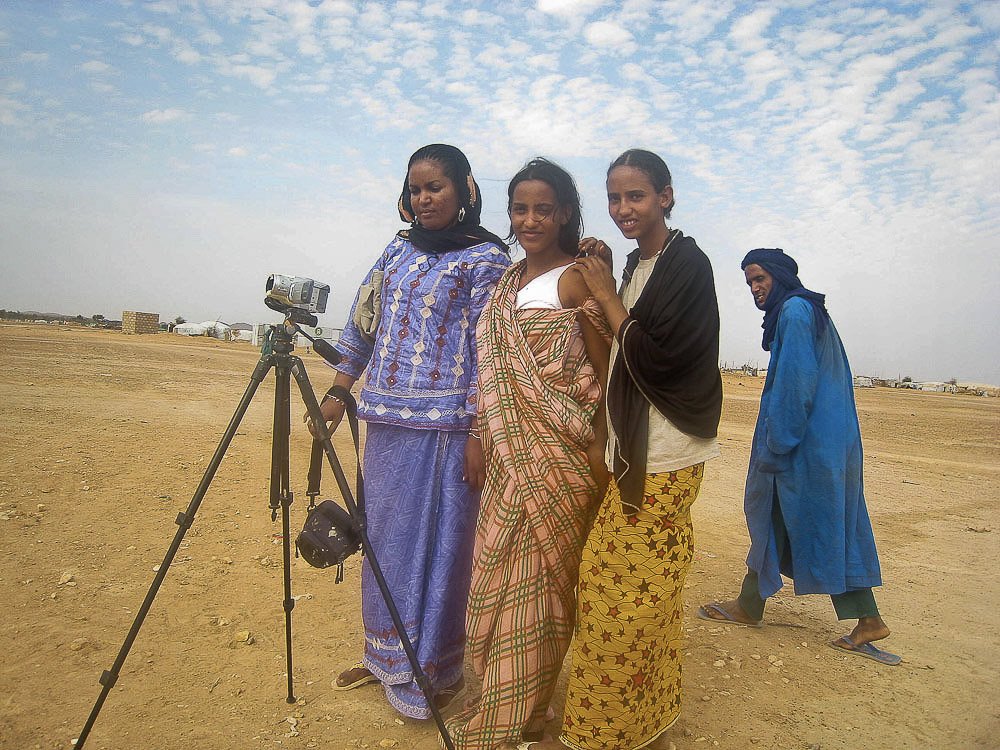


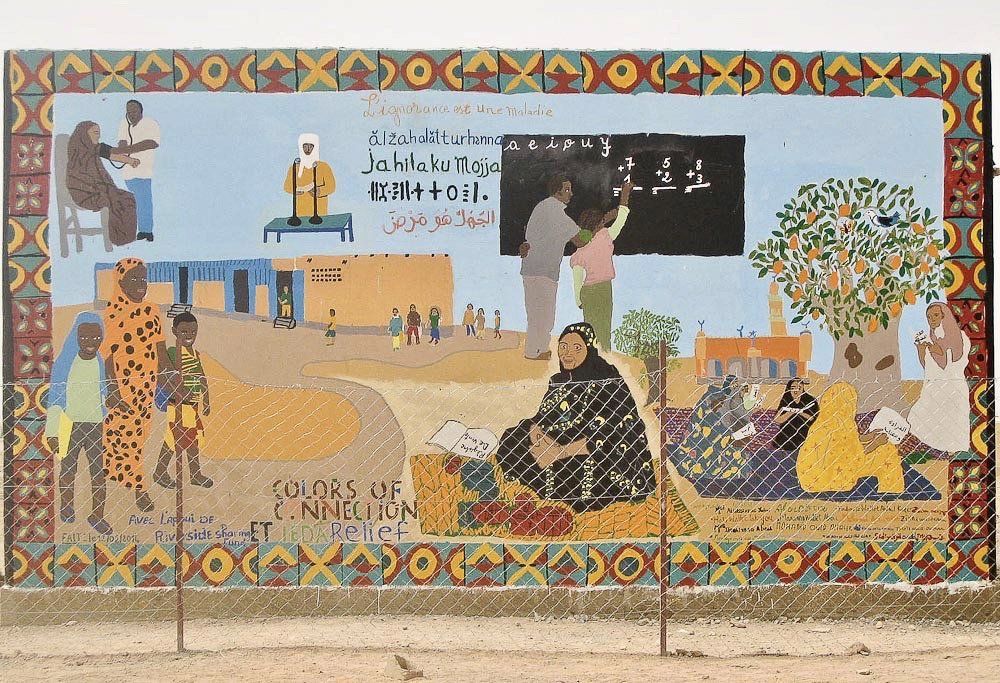

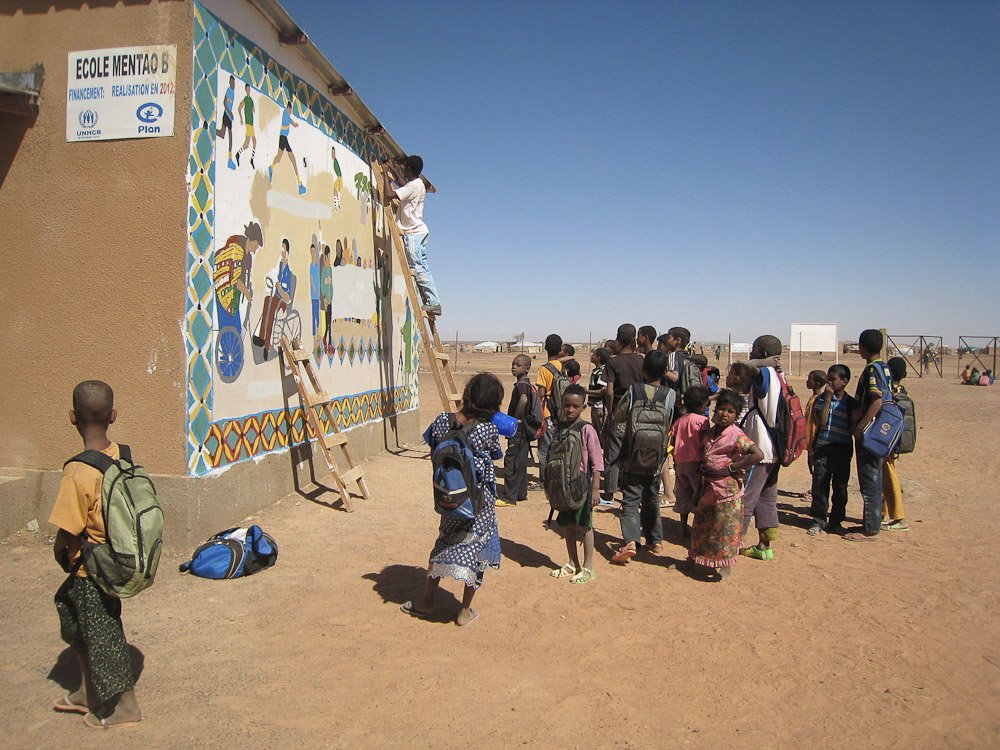
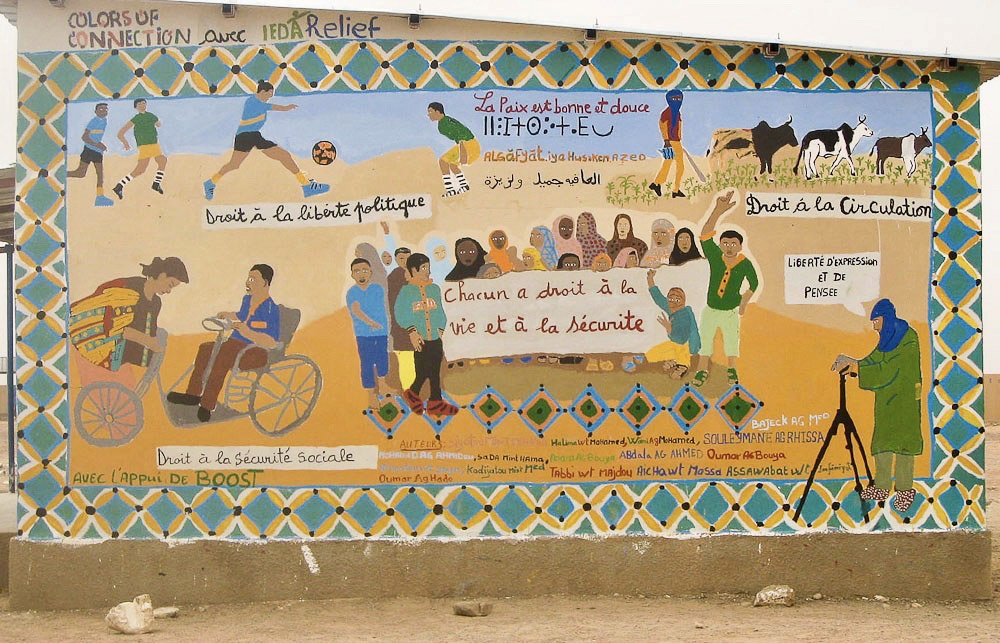




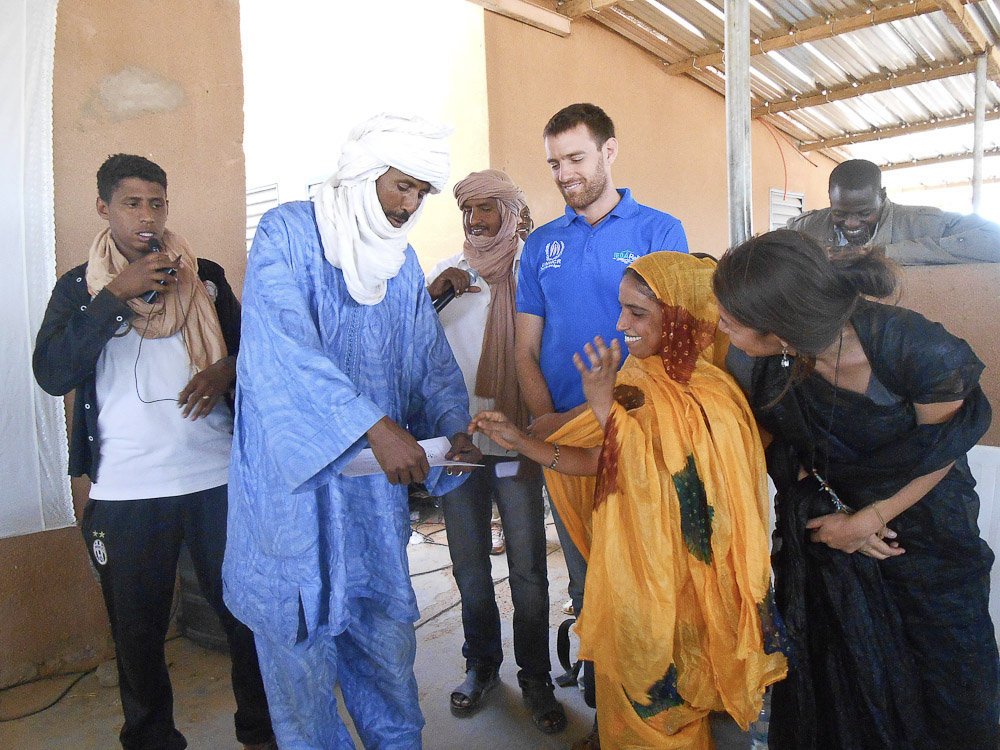

Back to all projects





















